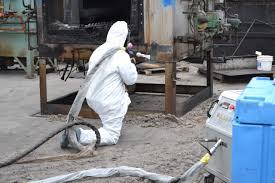The Evolution and Art of Embroidery Designs: A Modern Creative Industry Explained

Embroidery has transformed dramatically over the past decade. What once required slow, hand-stitched precision has now grown into a global digital craft powered by software, automation, and artistic innovation. At the center of this transformation lies one powerful element: embroidery designs. These designs serve as the blueprint for every stitch, shape, and texture seen on garments, hats, patches, and home décor.
From large clothing brands to small home-based creators, embroidery designs empower anyone to turn simple artwork into durable, textured, and visually striking stitched pieces. As the demand for personalization, branding, and handmade aesthetics rises, embroidery continues to flourish as both a business opportunity and a creative outlet.
This article explores the modern world of embroidery designs, how they are created, why they matter, and how they shape today’s apparel and creative industries.
The Growing Popularity of Embroidery Designs
Embroidery has regained attention thanks to several cultural and technological changes:
-
Personalized products are trending
-
Small businesses on Etsy and Instagram rely on custom apparel
-
Fashion brands are reintroducing stitched elements
-
Embroidery machines are becoming more affordable
-
Digital design software is more accessible than ever
These factors helped embroidery evolve from a niche skill into a widely adopted creative industry. With thousands of new creators entering the field every year, the demand for professional, clean, and machine-ready embroidery designs has grown exponentially.
Why Embroidery Designs Matter
Every embroidered piece begins with a design. Without a properly built file, even the highest-end embroidery machine cannot produce a clean stitch-out. Embroidery designs determine:
-
How smooth the edges look
-
How well letters read
-
How durable the final piece is
-
How efficiently the machine runs
-
Whether the design puckers, pulls, or distorts
A well-made embroidery design saves time, thread, money, and frustration. It prevents thread breaks, reduces unnecessary trims, and gives the final product a polished, professional appearance.
For businesses, this means fewer production delays. For hobbyists, it means that beautiful results are achievable without excessive trial and error.
What Makes a High-Quality Embroidery Design?
Not all designs are equal. A visually nice image can still stitch terribly. High-quality embroidery designs must include:
1. Correct Stitch Type Choices
Designers use different stitch types for different effects:
-
Satin stitches for letters, outlines, borders
-
Tatami/fill stitches for larger areas
-
Run stitches for thin details
-
3D puff techniques for raised lettering
-
Appliqué for large shapes
The stitch type determines texture, readability, and durability.
2. Proper Density
Density controls how tightly thread is packed. Too much density makes the design stiff and can break needles. Too little density leaves gaps. A balanced approach produces smooth, even coverage.
3. Underlay Foundation
Underlay strengthens the fabric and helps prevent distortion. Without underlay, stitches can sink or shift. Good designs always include the right type of underlay.
4. Clean Pathing and Sequencing
The pathing determines how the machine moves from one part to the next. Good pathing:
-
Reduces unnecessary jumps
-
Minimizes trims
-
Prevents travel lines showing through fabric
-
Saves stitching time
5. Fabric Consideration
Different fabrics react differently to stitching:
-
Stretchy fabrics require lighter stitching
-
Caps need angled, structured stitching
-
Thick jackets need bold underlay
-
Towels need knockdown stitches
Quality embroidery designs adapt to the fabric they will be used on.
How Embroidery Designs Are Created
Modern design creation blends artistry with technical skill.
Step 1: Artwork Preparation
The designer cleans up the original artwork, enlarges small details, and simplifies elements that won’t stitch well.
Step 2: Digitizing / Punching
Using professional software, the digitizer assigns stitch types, angles, density, and pathing. This is the heart of the embroidery design process.
Digitizing is NOT automatic. Software is only a tool. A human digitizer must understand how thread, fabric, and machines behave.
Step 3: Machine Testing
A test stitch-out reveals any flaws. Designers adjust density, angles, or sequencing if needed.
Step 4: Exporting the Design
The final file is saved in machine formats like DST, PES, JEF, EXP, VP3, HUS, and more.
Popular Categories of Embroidery Designs
Embroidery touches almost every category of creative and commercial work. Some top categories include:
Logo and Branding Designs
Businesses use embroidered logos on uniforms, hats, shirts, and promotional items.
Patch Designs
Morale patches, military patches, fashion patches, biker patches, and club badges remain extremely popular worldwide.
Floral and Nature Patterns
These classic embroidery designs are widely used in fashion and home décor.
Character and Pop-Culture-Inspired Designs
Creators design fan art–style embroidery for jackets, hoodies, and accessories.
Monograms and Names
Perfect for towels, bags, robes, baby items, and gifts.
3D Puff Embroidery
A must-have for caps and streetwear brands.
Appliqué Designs
Perfect for children’s clothing and large areas that benefit from fabric instead of stitching.
Embroidery Designs in Business and Fashion
Embroidery is more than art—it’s a business powerhouse.
Brands use embroidery because:
-
It looks premium
-
It lasts longer than printing
-
It resists fading and cracking
-
It communicates professionalism
-
It suits nearly every garment
Small businesses rely on custom embroidery designs to grow Etsy shops, local apparel brands, and patch collections.
Even large fashion brands use embroidery to add uniqueness, quality, and texture to seasonal collections.
Embroidery Designs for Hobbyists
With affordable home embroidery machines, thousands of people explore embroidery as a hobby. Many enjoy:
-
Turning artwork into stitched art
-
Making personalized gifts
-
Selling handmade items online
-
Customizing jackets, hats, and bags
-
Learning new artistic techniques
Embroidery is creative, calming, and endlessly customizable.
Current Trends in Embroidery Design
Modern trends include:
-
Minimalist line-art sketches
-
Retro patch-style designs
-
Oversized jacket-back embroidery
-
Boho-inspired floral art
-
Vibrant typography
-
3D puff sports and streetwear designs
These styles dominate social media, small shops, and online marketplaces.
The Future of Embroidery Designs
Embroidery continues to evolve with:
-
AI-assisted digitizing tools
-
Smarter embroidery machines
-
Eco-friendly threads and stabilizers
-
Growing personalization trends
-
Online selling platforms
Embroidery remains one of the few crafts that blend old-world charm with modern technology.
Conclusion
Embroidery designs are the heart of every stitched creation. They combine artistry, engineering, and creativity to produce durable, beautiful, and meaningful work. Whether you're a business owner, designer, hobbyist, or fashion creator, embroidery opens endless possibilities.
With modern tools and growing demand, embroidery is not just a craft—it's a thriving global industry that continues to inspire makers of all levels.





